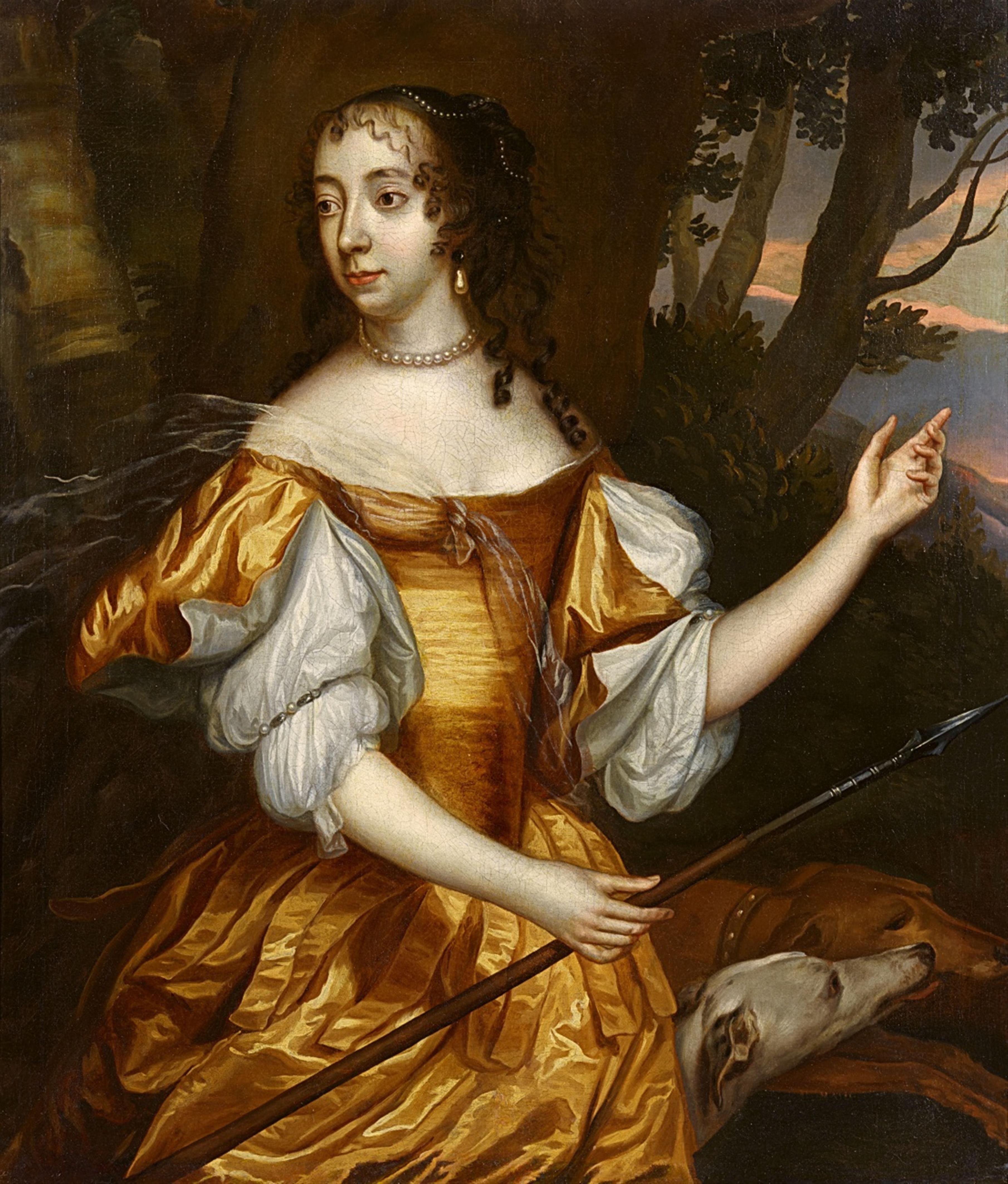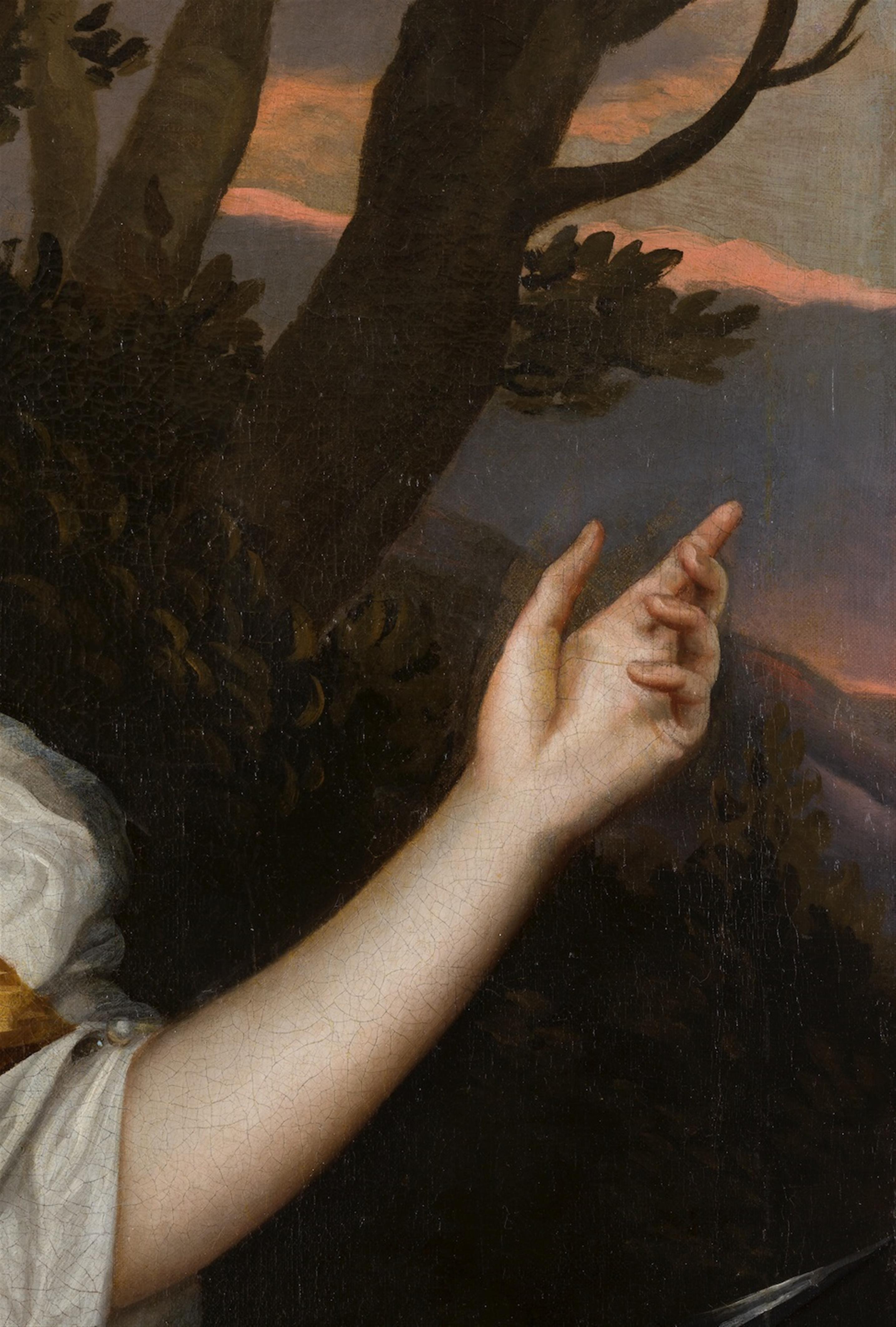Jan Mijtens
Portrait of Albertine Agnes of Orange-Nassau, Princess of Nassau-Diez, as Diana
Oil on canvas (relined). 103.5 x 88 cm.
Albertine Agnes was born in The Hague in 1634 as the daughter of Prince Frederick Henry of Orange (1584-1647), governor of Holland, Zeeland, Utrecht, Guelders and Overijssel, and his wife Amalie Countess of Solms-Braunfels. In 1652 she married her cousin Count Wilhelm Friedrich of Nassau-Diez, the governor of the northern provinces of Friesland, Drenthe and Groningen, who was more than twenty years her senior. Through her, the Nassau-Diez line won the claim to the inheritance of the older House of Orange, and her grandson Johann Wilhelm Friso became the founder of the younger House of Orange, from which the present Dutch royal family also originates, even after Wilhelm III died childless in 1702.
Together with her three sisters Luise Henriette, Electoress of Brandenburg, Henriette Katharina, Princess of Anhalt-Dessau, and Maria, Countess Palatine of Simmern, Albertine Agnes is probably one of the most portrayed women of her time. Among the artists who painted her were Gerard van Honthorst, Caspar Netscher, Abraham van den Tempel and especially Jan Mijtens, to whom she owed a considerable sum of money for various commissions upon her death. Jan Mijtens also created the most famous depiction of Albertine Agnes, the group portrait of the "Four Sisters of the House of Orange Nassau", which was painted on the occasion of the wedding of the youngest princess in Cleves in 1666 and depicts the four sisters in a landscape below the Schwanenburg (today on loan from the Anhalt Picture Gallery Dessau in Mosigkau Palace).
The present portrait was also painted by Jan Mijtens, the leading portraitist in The Hague in the mid-17th century. It shows the young Princess of Nassau-Diez alone in three-quarter length. She wears a yellow silk gown with a transparent scarf and fine pearl jewellery. Attributes of the hunt, such as a spear and two greyhounds, identify the representation as a "portrait historié". This special form of portrait allows the sitters to portray mythological or, less frequently, biblical or literary characters through the use of attributes and costumes. This style of portrait enjoyed particular popularity in the 17th century, especially in France and the northern Netherlands, and was also frequently taken up by Mijtens. Albertine Agnes von Nassau-Diez is here portrayed as Diana, goddess of the hunt. In addition to the attributes mentioned above, the "pteryges", a fringe of fabric strips that falls from the sitter's waist over her skirt, also indicate that this work is intended to represent a classical or mythological character.
Several pentimenti, most clearly visible on the sitter's left hand, suggest that our painting is the first version of this type of portrait. Alexandra Nina Bauer lists two almost identical versions in her catalogue raisonné (loc. cit., p. 194, no. 54a and 54 b), one of which is in the Siegerland-Museum in Siegen.
We would like to thank Dr. Alexandra Nina Bauer for confirming this work's authenticity on the basis of digital photographs.
.
Provenance
Private collection, London.
Literature
Alexandra Nina Bauer: Jan Mijtens (1613/14-1670). Leben und Werk, Petersberg, 2006, p. 380, illus. A 54.




